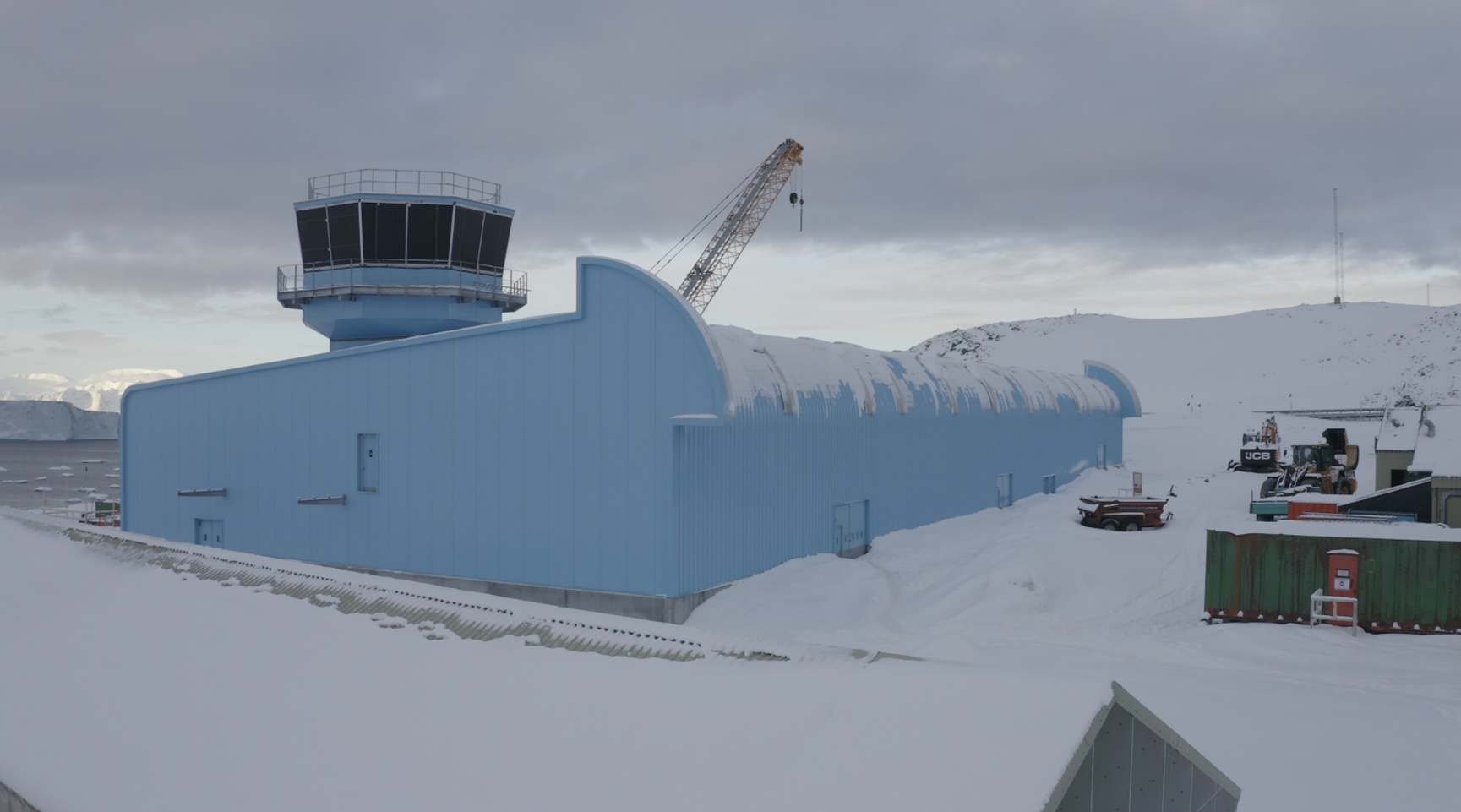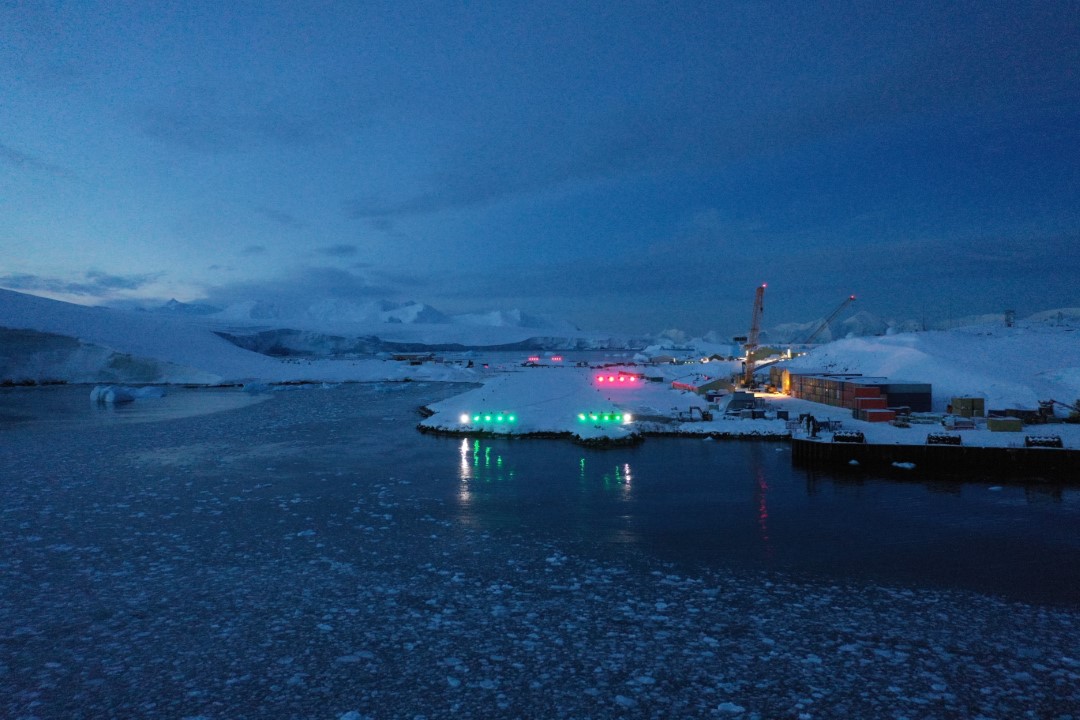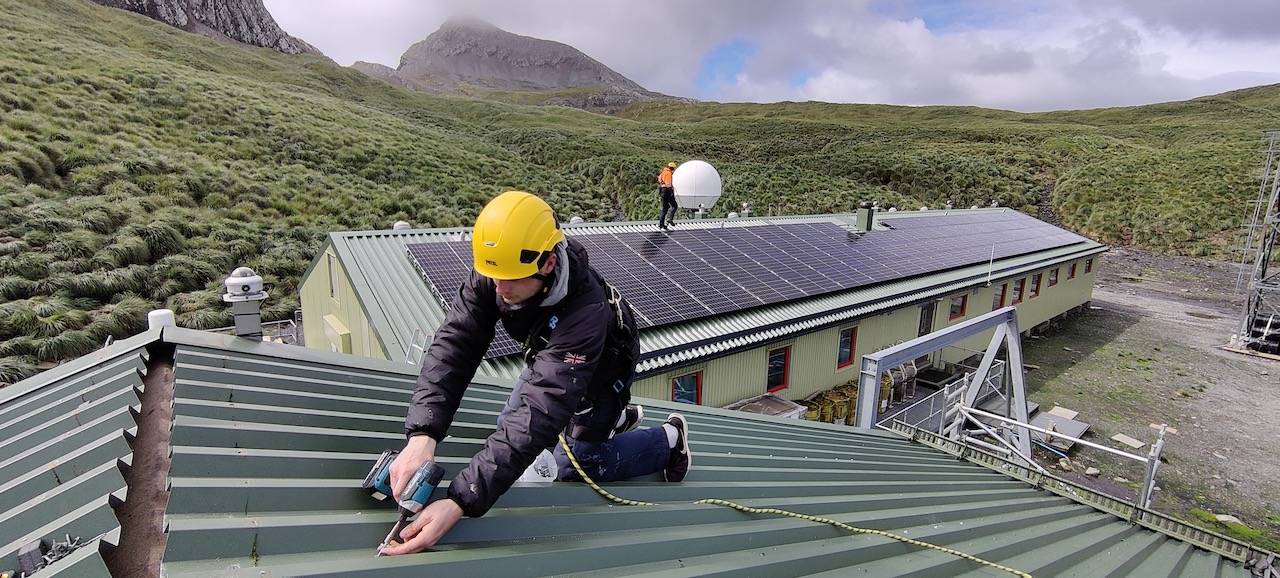Modernising Antarctic Infrastructure for Future Generations of Polar Scientists
Specialist construction teams are travelling home to the UK after five months of work in Antarctica to modernise British Antarctic Survey (BAS) research stations. They've successfully completed a number of construction milestones this season. This includes upgrades to the runway and the exterior of a new facility at Rothera Research Station, along with the installation of a renewable energy system at Bird Island Research Station.
BAS is currently replacing old buildings in Antarctica that have reached the end of their life with modern and energy-efficient infrastructure.
Rothera Research Station
Construction in the Antarctic is challenging. The Antarctic Infrastructure Modernisation Programme (AIMP) has made great progress at Rothera Research Station. The new science and operations facility, the Discovery Building, is now weathertight and the runway replacement lighting is now operational.
The cladding of the Discovery building and a new operations tower, giving 360-degree views of the runway, wharf and station buildings are now complete. Internal works are progressing on the corridors, ventilation system and installing of metal flooring.

The team have worked hard in an extreme environment to upgrade the lighting for the runway, which is now more energy efficient than the old lighting. This maintains safe and reliable flying operations into Rothera for the future, enabling vital polar science to take place.

The Antarctic Infrastructure Modernisation Programme was commissioned by the Natural Environment Research Council (NERC-UKRI) to enable a world-leading capability to ensure that Britain remains at the forefront of climate, biodiversity and ocean research in the Polar Regions. The work is part of a collaborative partnership with construction partner BAM, design consultants Sweco and Hugh Broughton Architects providing delivery design. Ramboll acts as technical advisors, with Norr Architects providing concept design, OFR providing fire consultancy and Turner & Townsend providing cost and commercial advice.
The final construction team members left the station on the RRS Sir David Attenborough on 28 April. The Discovery Building is scheduled for completion in 2025 and the construction team will return this November ahead of a busy schedule where the internal fit-out of the building will take place.
Bird Island Research Station

A small engineering team from BAS Estates travelled to Bird Island Research Station on South Georgia in the Sub-antarctic at the end of 2022 to start work on a new solar and battery system, which is expected to reduce carbon emissions and fuel use by 50% per year.
The team completed a new plant room and installed around 300 solar photovoltaic panels covering the majority of Prince House roof at Bird Island Research Station. A new smart grid on station will regulate the balance between the energy generation and energy demand. The new system will optimise power output for shorter periods when needed, saving fuel and associated emissions.
Completion of the new solar and battery system is scheduled for Antarctic summer 2024. The team is currently reviewing additional low carbon technologies to fully decarbonise Bird Island Research Station in the future.






